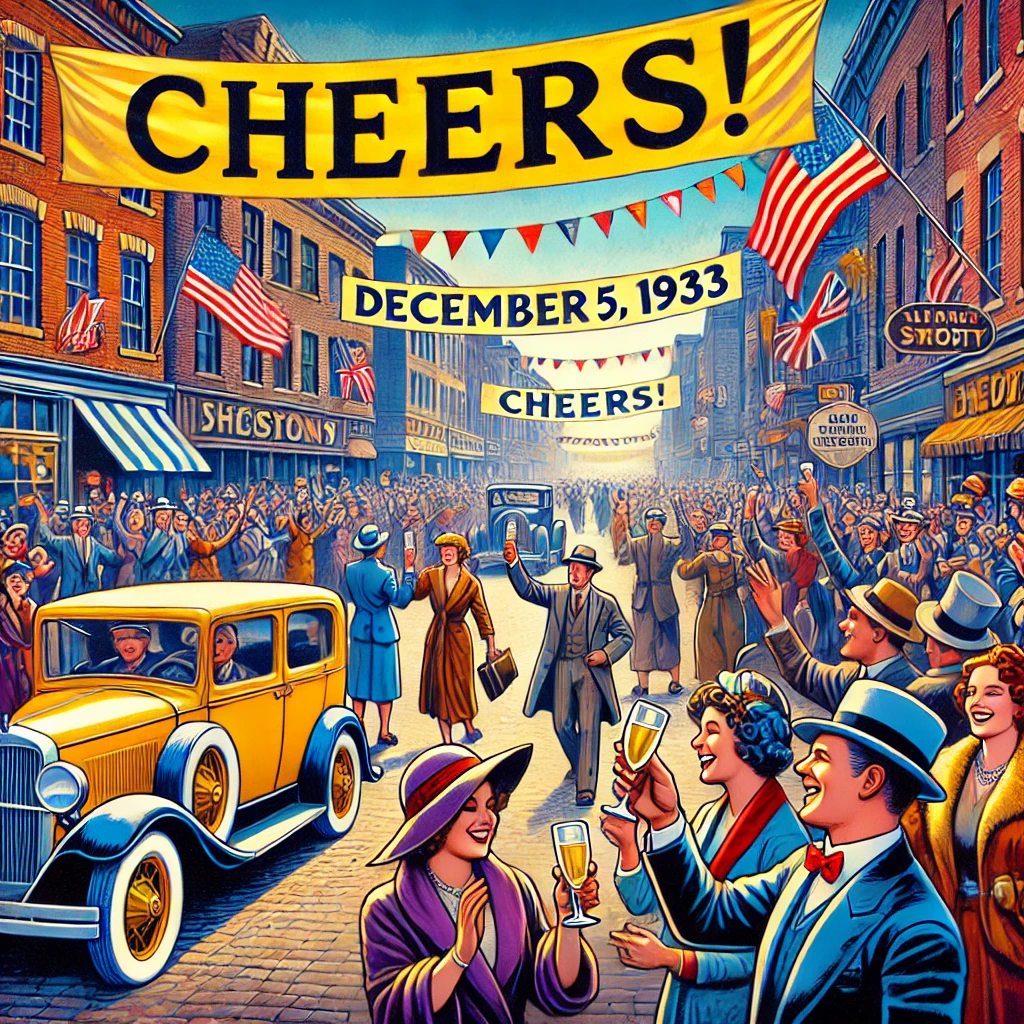On this liberating day in 1933, the United States marked the end of an era with the ratification of the 21st Amendment to the U.S. Constitution. This pivotal moment repealed the 18th Amendment, officially terminating the nationwide prohibition of alcohol that had been in place for nearly 14 years. The nation’s spirits were high as Americans celebrated their restored right to legally produce, sell, and consume alcoholic beverages—a freedom many had sorely missed.

The Prohibition Era: A Bold Experiment
Prohibition, which began in 1920, was driven by the temperance movement, a social and political crusade aimed at reducing alcohol consumption to improve public morality and health. Spearheaded by organizations like the Anti-Saloon League and Women’s Christian Temperance Union, advocates believed banning alcohol would decrease crime, strengthen families, and elevate societal values. Initially, the 18th Amendment and the Volstead Act, which enforced it, garnered significant public support.
However, the reality of Prohibition fell short of its lofty promises. The ban on alcohol gave rise to a booming black market, with bootleggers and speakeasies thriving in defiance of the law. Organized crime syndicates, led by notorious figures like Al Capone, profited immensely from illegal liquor sales, fueling corruption and violence across the country. For many, the “noble experiment” became synonymous with unintended chaos and hypocrisy.
The Road to Repeal
By the late 1920s, Prohibition’s flaws were undeniable. Alcohol consumption persisted, law enforcement struggled to curb illicit trade, and the federal government lost millions in potential tax revenue. The onset of the Great Depression further underscored the economic argument against Prohibition, as repealing it promised to revive jobs in brewing and distilling while generating much-needed funds.

The push for repeal gained momentum with the election of President Franklin D. Roosevelt in 1932. His campaign, centered on economic recovery, included promises to end Prohibition. The 21st Amendment was proposed in February 1933 and rapidly ratified on December 5th of that year. The swift action highlighted the widespread public demand for change.
A Legacy of Reform
The repeal of Prohibition did more than restore the legal alcohol trade—it reshaped federal and state governance. It marked the first and only time an amendment was repealed by another amendment, demonstrating the Constitution’s ability to adapt to societal needs. The era also highlighted the complexity of legislating personal behavior and set the stage for future debates on government regulation.
Economically, the alcohol industry flourished post-repeal, becoming a vital contributor to the national economy through jobs and tax revenue. Culturally, the end of Prohibition ushered in a renewed appreciation for American craftsmanship in brewing and distilling, laying the foundation for today’s thriving craft beverage industry.

Reflections on Freedom and Regulation
The repeal of Prohibition remains a powerful reminder of the balance between individual freedoms and collective responsibility. While it exposed the limits of government intervention in private life, it also underscored the importance of public discourse and adaptability in shaping national policy.
Today, as Americans raise their glasses on this historic date, they honor not just the end of a controversial experiment but also the enduring spirit of progress and reform.
